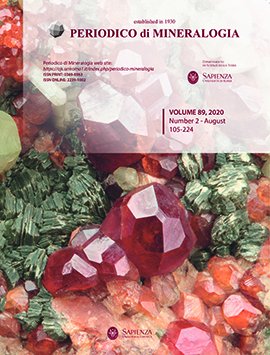Source- vs topographic-forcing in pyroclastic currents: the case of the Orvieto-Bagnoregio Ignimbrite, Vulsini, central Italy
Keywords:
pyroclastic current, ignimbrite, flow regime, thickness, clast size, VulsiniAbstract
The main pyroclastic flow unit of the Orvieto-Bagnoregio Ignimbrite (Vulsini, central Italy) provides a striking example of increasing thickness with distance from the vent, accompanied by opposite size-distance trends for lithic and juvenile clasts. Lithic clasts show normal lateral grading, while dense (1120-1400 kg/m3) scoria clasts show inverse lateral grading. The latter trends are attributed to the opposite density contrast with respect to the flow medium of gas and fine particles and put a constraint to the minimum density of the transporting flow. Thus, the study example approaches the high-concentration, non-turbulent end-member of pyroclastic currents. By applying the topological aspect ratio approach, we infer a forced behavior of the parent flow in proximal to intermediate settings, due to sustained feeding with high mass discharge rate at source. In distal settings, the source-forced regime was enhanced by topographic forcing due to channeling along radial topographic lows, thus resulting in increasing bulk density and runout of the current. By analogy with the mobility of dry debris flows, the sliding component of transport prevailed in proximal to intermediate settings, accounting for the prevailing tendency of the pyroclastic current to transport than to deposit, thus forming a relatively thin deposit with normal lateral grading of lithics. The spreading component dominated downcurrent, resulting in increasing pyroclast accumulation (up to tens of meters of thickness) and delayed deposition of coarsest scoria clasts as far as the final runout.


